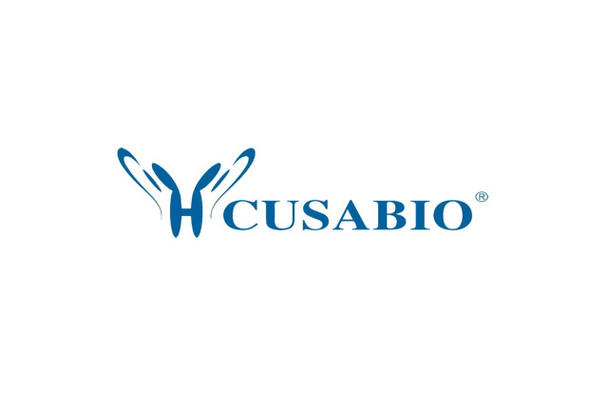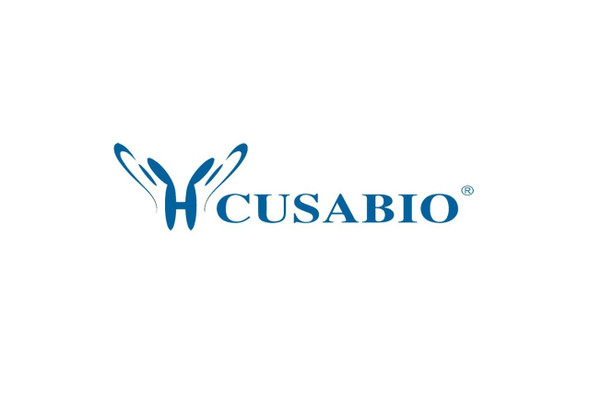Cusabio Virus & Bacteria Recombinants
Recombinant Hepatitis C virus genotype 1b Genome polyprotein, partial | CSB-YP530838HVQ(A3)
- SKU:
- CSB-YP530838HVQ(A3)
- Availability:
- 25 - 35 Working Days
Description
Recombinant Hepatitis C virus genotype 1b Genome polyprotein, partial | CSB-YP530838HVQ(A3) | Cusabio
Alternative Name(s): Genome polyprotein [Cleaved into: Core protein p21; Capsid protein C; p21); Core protein p19; Envelope glycoprotein E1; gp32; gp35); Envelope glycoprotein E2; NS1; gp68; gp70); p7; Protease NS2-3; p23; EC 3.4.22.-); Serine protease NS3; EC 3.4.21.98; EC 3.6.1.15; EC 3.6.4.13; Hepacivirin; NS3P; p70); Non-structural protein 4A; NS4A; p8); Non-structural protein 4B; NS4B; p27); Non-structural protein 5A; NS5A; p56); RNA-directed RNA polymerase; EC 2.7.7.48; NS5B; p68)]
Gene Names: N/A
Research Areas: Others
Organism: Hepatitis C virus genotype 1a (isolate 1) (HCV)
AA Sequence: STNPKPQRKTKRNTNRRPQDVKFPGGGQIVGGVYLLPRRGPRLGVRATRKASERSQPRGRRQPIPKARRPEGRAWAQPGYPWPLYGNEGLGWAGWLLSPRGSRPSWGPTDPRRRSRNLGKVIDTLTCGFADLMGYIPLVGAPLGGAARALAHGVRVLEDGVNYATGNLPGCSFSIF
Source: Yeast
Tag Info: N-terminal 6xHis-tagged
Expression Region: 2-177aa
Sequence Info: Partial
MW: 21.2 kDa
Purity: Greater than 90% as determined by SDS-PAGE.
Relevance: Core protein packages viral RNA to form a viral nucleocapsid, and promotes virion budding. Modulates viral translation initiation by interacting with HCV IRES and 40S ribosomal subunit. Also regulates many host cellular functions such as signaling pathways and apoptosis. Prevents the establishment of cellular antiviral state by blocking the interferon-alpha/beta (IFN-alpha/beta) and IFN-gamma signaling pathways and by inducing human STAT1 degradation. Thought to play a role in virus-mediated cell transformation leading to hepatocellular carcinomas. Interacts with, and activates STAT3 leading to cellular transformation. May repress the promoter of p53, and sequester CREB3 and SP110 isoform 3/Sp110b in the cytoplasm. Also represses cell cycle negative regulating factor CDKN1A, thereby interrupting an important check point of normal cell cycle regulation. Targets transcription factors involved in the regulation of inflammatory responses and in the immune response: suppresses NK-kappaB activation, and activates AP-1. Could mediate apoptotic pathways through association with TNF-type receptors TNFRSF1A and LTBR, although its effect on death receptor-induced apoptosis rains controversial. Enhances TRAIL mediated apoptosis, suggesting that it might play a role in immune-mediated liver cell injury. Seric core protein is able to bind C1QR1 at the T-cell surface, resulting in down-regulation of T-lymphocytes proliferation. May transactivate human MYC, Rous sarcoma virus LTR, and SV40 promoters. May suppress the human FOS and HIV-1 LTR activity. Alters lipid metabolism by interacting with hepatocellular proteins involved in lipid accumulation and storage. Core protein induces up-regulation of FAS promoter activity, and thereby probably contributes to the increased triglyceride accumulation in hepatocytes (steatosis) .E1 and E2 glycoproteins form a heterodimer that is involved in virus attachment to the host cell, virion internalization through clathrin-dependent endocytosis and fusion with host mbrane. E1/E2 heterodimer binds to human LDLR, CD81 and SCARB1/SR-BI receptors, but this binding is not sufficient for infection, some additional liver specific cofactors may be needed. The fusion function may possibly be carried by E1. E2 inhibits human EIF2AK2/PKR activation, preventing the establishment of an antiviral state. E2 is a viral ligand for CD209/DC-SIGN and CLEC4M/DC-SIGNR, which are respectively found on dendritic cells (DCs), and on liver sinusoidal endothelial cells and macrophage-like cells of lymph node sinuses. These interactions allow capture of circulating HCV particles by these cells and subsequent transmission to permissive cells. DCs act as sentinels in various tissues where they entrap pathogens and convey th to local lymphoid tissue or lymph node for establishment of immunity. Capture of circulating HCV particles by these SIGN+ cells may facilitate virus infection of proximal hepatocytes and lymphocyte subpopulations and may be essential for the establishment of persistent infection .P7 ses to be a heptameric ion channel protein (viroporin) and is inhibited by the antiviral drug amantadine. Also inhibited by long-alkyl-chain iminosugar derivatives. Essential for infectivity .Protease NS2-3 is a cysteine protease responsible for the autocatalytic cleavage of NS2-NS3. Ses to undergo self-inactivation following maturation .NS3 displays three enzymatic activities: serine protease, NTPase and RNA helicase. NS3 serine protease, in association with NS4A, is responsible for the cleavages of NS3-NS4A, NS4A-NS4B, NS4B-NS5A and NS5A-NS5B. NS3/NS4A complex also prevents phosphorylation of human IRF3, thus preventing the establishment of dsRNA induced antiviral state. NS3 RNA helicase binds to RNA and unwinds dsRNA in the 3' to 5' direction, and likely RNA stable secondary structure in the tplate strand. Cleaves and inhibits the host antiviral protein MAVS .NS4B induces a specific mbrane alteration that serves as a scaffold for the virus replication complex. This mbrane alteration gives rise to the so-called ER-derived mbranous web that contains the replication complex .NS5A is a component of the replication complex involved in RNA-binding. Its interaction with Human VAPB may target the viral replication complex to vesicles. Down-regulates viral IRES translation initiation. Mediates interferon resistance, presumably by interacting with and inhibiting human EIF2AK2/PKR. Ses to inhibit apoptosis by interacting with BIN1 and FKBP8. The hyperphosphorylated form of NS5A is an inhibitor of viral replication .NS5B is an RNA-dependent RNA polymerase that plays an essential role in the virus replication.
Reference: An RNA-binding protein, hnRNP A1, and a scaffold protein, septin 6, facilitate hepatitis C virus replication.Kim C.S., Seol S.K., Song O.-K., Park J.H., Jang S.K.J. Virol. 81:3852-3865(2007)
Storage: The shelf life is related to many factors, storage state, buffer ingredients, storage temperature and the stability of the protein itself. Generally, the shelf life of liquid form is 6 months at -20?/-80?. The shelf life of lyophilized form is 12 months at -20?/-80?.
Notes: Repeated freezing and thawing is not recommended. Store working aliquots at 4? for up to one week.
Function: Core protein packages viral RNA to form a viral nucleocapsid, and promotes virion budding. Modulates viral translation initiation by interacting with HCV IRES and 40S ribosomal subunit. Also regulates many host cellular functions such as signaling pathways and apoptosis. Prevents the establishment of cellular antiviral state by blocking the interferon-alpha/beta (IFN-alpha/beta) and IFN-gamma signaling pathways and by inducing human STAT1 degradation. Thought to play a role in virus-mediated cell transformation leading to hepatocellular carcinomas. Interacts with, and activates STAT3 leading to cellular transformation. May repress the promoter of p53, and sequester CREB3 and SP110 isoform 3/Sp110b in the cytoplasm. Also represses cell cycle negative regulating factor CDKN1A, thereby interrupting an important check point of normal cell cycle regulation. Targets transcription factors involved in the regulation of inflammatory responses and in the immune response
Involvement in disease:
Subcellular Location: Core protein p21: Host endoplasmic reticulum membrane, Single-pass membrane protein, Host mitochondrion membrane, Single-pass type I membrane protein, Host lipid droplet, Note=The C-terminal transmembrane domain of core protein p21 contains an ER signal leading the nascent polyprotein to the ER membrane, Only a minor proportion of core protein is present in the nucleus and an unknown proportion is secreted, SUBCELLULAR LOCATION: Core protein p19: Virion, Host cytoplasm, Host nucleus, Secreted, SUBCELLULAR LOCATION: Envelope glycoprotein E1: Virion membrane, Single-pass type I membrane protein, Host endoplasmic reticulum membrane, Single-pass type I membrane protein, Note=The C-terminal transmembrane domain acts as a signal sequence and forms a hairpin structure before cleavage by host signal peptidase, After cleavage, the membrane sequence is retained at the C-terminus of the protein, serving as ER membrane anchor, A reorientation of the second hydrophobic stretch occurs after cleavage producing a single reoriented transmembrane domain, These events explain the final topology of the protein, ER retention of E1 is leaky and, in overexpression conditions, only a small fraction reaches the plasma membrane, SUBCELLULAR LOCATION: Envelope glycoprotein E2: Virion membrane, Single-pass type I membrane protein, Host endoplasmic reticulum membrane, Single-pass type I membrane protein, Note=The C-terminal transmembrane domain acts as a signal sequence and forms a hairpin structure before cleavage by host signal peptidase, After cleavage, the membrane sequence is retained at the C-terminus of the protein, serving as ER membrane anchor, A reorientation of the second hydrophobic stretch occurs after cleavage producing a single reoriented transmembrane domain, These events explain the final topology of the protein, ER retention of E2 is leaky and, in overexpression conditions, only a small fraction reaches the plasma membrane, SUBCELLULAR LOCATION: p7: Host endoplasmic reticulum membrane, Multi-pass membrane protein, Host cell membrane, Note=The C-terminus of p7 membrane domain acts as a signal sequence, After cleavage by host signal peptidase, the membrane sequence is retained at the C-terminus of the protein, serving as ER membrane anchor, Only a fraction localizes to the plasma membrane, SUBCELLULAR LOCATION: Protease NS2-3: Host endoplasmic reticulum membrane, Multi-pass membrane protein, SUBCELLULAR LOCATION: Serine protease NS3: Host endoplasmic reticulum membrane, Peripheral membrane protein, Note=NS3 is associated to the ER membrane through its binding to NS4A, SUBCELLULAR LOCATION: Non-structural protein 4A: Host endoplasmic reticulum membrane, Single-pass type I membrane protein, Note=Host membrane insertion occurs after processing by the NS3 protease, SUBCELLULAR LOCATION: Non-structural protein 4B: Host endoplasmic reticulum membrane, Multi-pass membrane protein, SUBCELLULAR LOCATION: Non-structural protein 5A: Host endoplasmic reticulum membrane, Peripheral membrane protein, Host cytoplasm, host perinuclear region, Host mitochondrion, Note=Host membrane insertion occurs after processing by the NS3 protease, SUBCELLULAR LOCATION: RNA-directed RNA polymerase: Host endoplasmic reticulum membrane, Single-pass type I membrane protein
Protein Families: Hepacivirus polyprotein family
Tissue Specificity:
Paythway:
Form: Liquid or Lyophilized powder
Buffer: If the delivery form is liquid, the default storage buffer is Tris/PBS-based buffer, 5%-50% glycerol. If the delivery form is lyophilized powder, the buffer before lyophilization is Tris/PBS-based buffer, 6% Trehalose, pH 8.0.
Reconstitution: We recommend that this vial be briefly centrifuged prior to opening to bring the contents to the bottom. Please reconstitute protein in deionized sterile water to a concentration of 0.1-1.0 mg/mL.We recommend to add 5-50% of glycerol (final concentration) and aliquot for long-term storage at -20?/-80?. Our default final concentration of glycerol is 50%. Customers could use it as reference.
Uniprot ID: O92972
HGNC Database Link: HGNC
UniGene Database Link: UniGene
KEGG Database Link: KEGG
STRING Database Link: STRING
OMIM Database Link: OMIM


-SDS__72649.1638527445.jpg?c=1)

-SDS__72649.1638527445.jpg?c=1)





